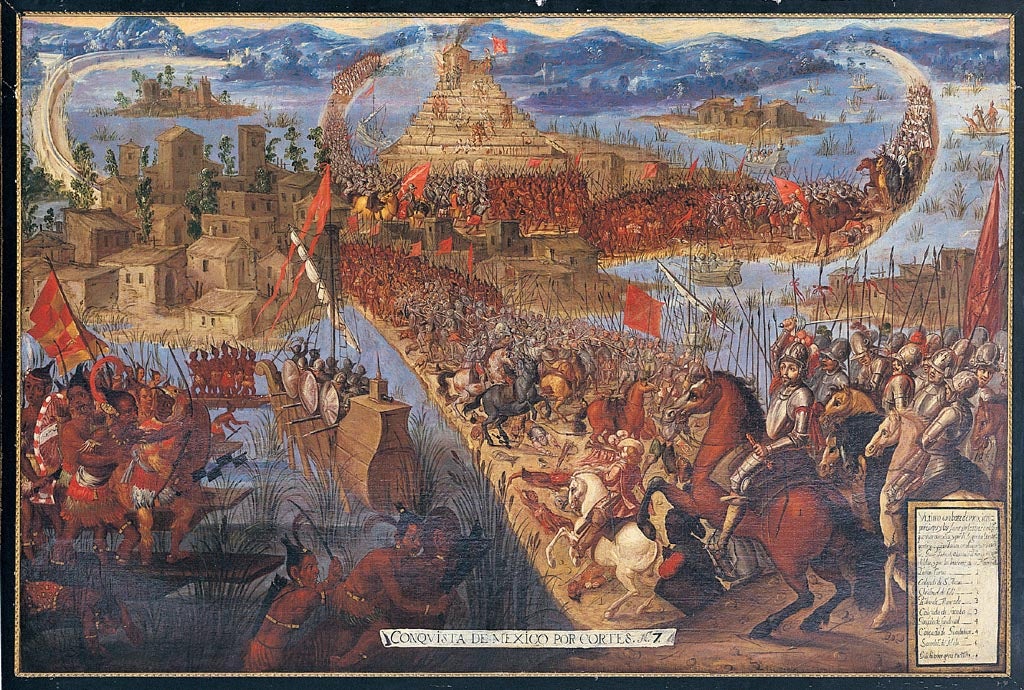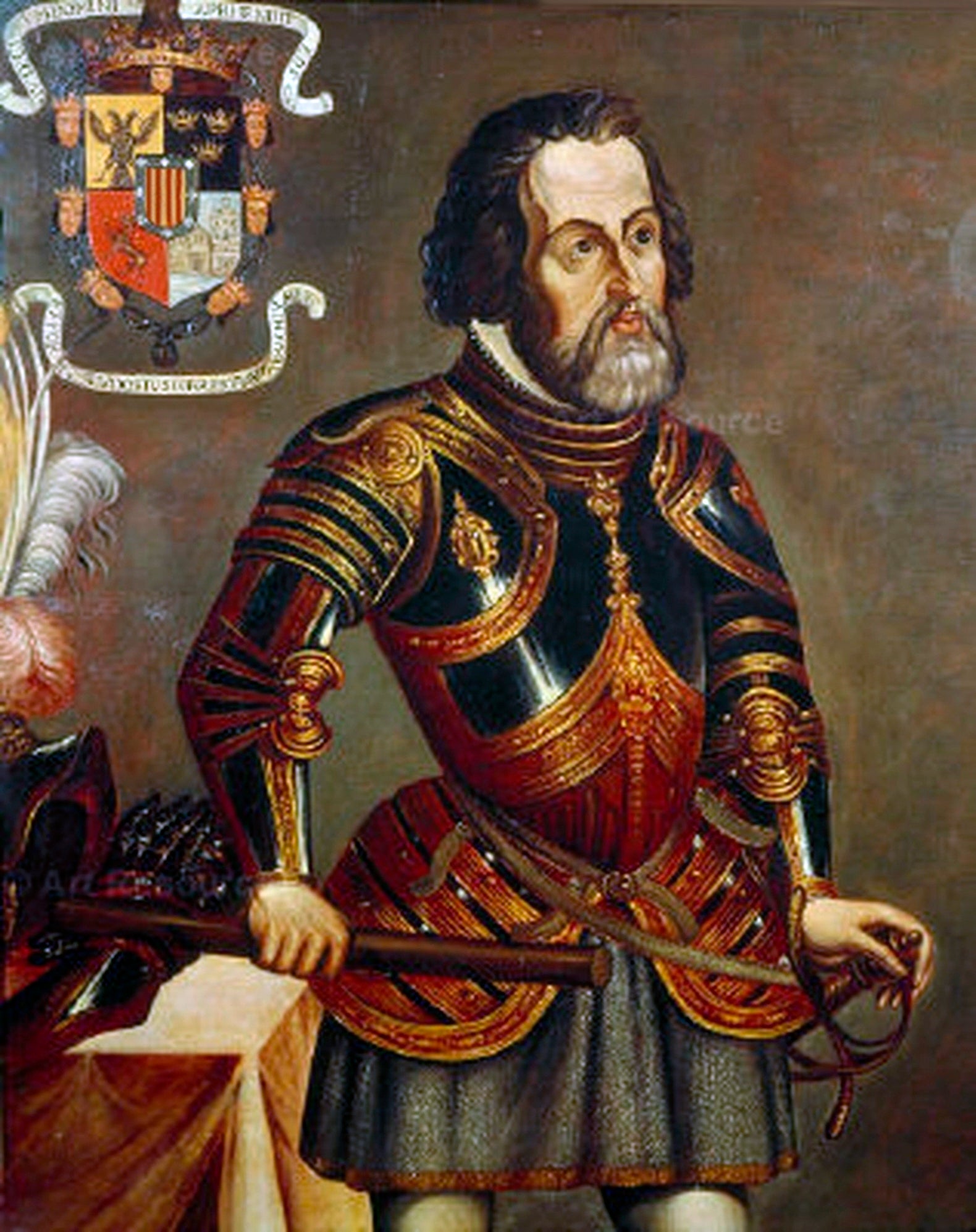Forgotten anniversary: The birth of Western imperialism
Archaeology correspondent David Keys considers how historians and archaeologists are revealing the real story of Spain’s conquest of the Aztecs

Forgotten by most of the world, this month marks the 500th anniversary of one of human history’s most terrible and tragic events – the first large-scale European military conquest in mainland America.
Until then, major European (at that time, exclusively Spanish) military campaigns in the New World had been limited to the islands of the Caribbean.
But in August 1521, a small army of freelance Spanish soldiers, claiming to act in the name of the King of Spain, seized control of Mexico’s Aztec Empire in a vast sea of blood and suffering.
Only after recent research in Mexican, US, Canadian, British and other universities, have historians and archaeologists succeeded for the first time in getting a clearer picture of what actually happened – especially the crucial role of non-Aztec indigenous peoples in the conquest process.
The fall of the Aztec Empire was the first major European military conquest in North, Central or South America, and paved the way for the eventual Spanish and other European seizures of most of the New World from its indigenous inhabitants. In a sense, August 1521 marked the beginning of large-scale Western imperialism.

The event also led to the total political collapse of all the major pre-European civilisations in the western hemisphere – and to the Spanish seizure of significant parts of Asia.
The destruction of the Aztec Empire in August 1521 changed world history more fundamentally than most other major historical events – but its 500th anniversary is being widely ignored throughout most of the world.
Commemorations in Mexico are mainly being limited to university seminars and a few events and reconstructions at archaeological sites and museums.
In Spain itself, no major events are planned – and, indeed, the Spanish government has rebuffed Mexican suggestions that Spain should apologise for its destruction of ancient Mexican civilisation. In Britain commemorations are limited to an online academic conference organised by Nottingham Trent University, an online seminar arranged by the Mexican Embassy and Kings College London, and a series of talks organised earlier this summer by the British Museum.
“The Spanish seizure of Mexico in 1521 was one of human history’s most violent acts,” says the Mexican archaeologist, Professor Elizabeth Baquedano of University College London.
The conquest led to centuries of suffering for tens of millions of people. In that sense, it was an event with few parallels.
Spanish soldiers, led by a minor Spanish nobleman called Hernán Cortés, had invaded Mexico, without pretext, in 1519. After two years of military and diplomatic activity, they finally seized control of the Aztec capital (Tenochtitlan, now modern Mexico City) on 13 August 1521 (23 August 1521 in modern ‘Gregorian’ calendar terms).
It's now estimated that the seizure of the city, at that time one of the largest in the world, involved the slaughter of between 50,000 and 100,000 Aztec civilians and troops – and has, over recent years, been characterised by many as an attempted genocide.
In one incident in the run-up to the Spanish seizure of the Empire, hundreds of unarmed Aztec warriors and nobles had been locked in an enclosure and systematically murdered.
In another incident, the last Aztec emperor was tortured by the Spaniards in order to learn where the Empire’s golden treasures had been hidden.
To find out what others are saying and join the conversation scroll down for the comments section or click here for our most commented on articles
“These Aztec gold treasures were then stolen by the Spaniards and melted down into gold ingots, which were subsequently shipped back to Spain,” says Professor Baquedano, a leading authority on the Aztecs.
Having seized the Aztec Empire, Spain then set about obliterating the Aztec capital’s major public buildings – and the Aztecs’ religion.
The seizure of Mexico in 1521 then led, in part, to Spain’s seizure of most of Central and South America. The new Spanish authorities in Tenochtitlan (Mexico City) first ordered the conquest of what are now the Central American nations of Guatemala, Honduras and El Salvador.
Some of the Spanish officers involved in the seizure of Mexico, then invaded northeast South America (what is now Venezuela).
Other veterans of the conquest of Mexico’s Aztec Empire, then took prominent roles in the seizure of the Inca Empire (Peru etc).

The Spanish seizure of Mexico also enabled it to conquer substantial swathes of the Pacific and parts of Asia. Mexican-originating Spanish armies and expeditions seized the Philippines between 1565 and 1582, and, ultimately, hundreds of Pacific islands, and also, briefly, small parts of China and Indonesia.
Control of Mexico also ultimately allowed Spain to take control of what are now the US states of California, New Mexico and Texas.
In Mexico itself, the Spanish established a system of forced unpaid labour (a form of slavery) – and this system was then extended to the Philippines and elsewhere. Recent research (mainly at the University of California and at Pennsylvania State University) has revealed that (by exploiting a loophole in Spanish law) they also established a vast international sex-slave human trafficking industry – by deliberately enslaving tens of thousands of indigenous Mexican pre-teen and teenage girls. Males were often simply murdered.
“The repression involved and the poverty that the slave labour systems created, disadvantaged Mexico’s and many other conquered areas’ indigenous populations in ways that still persist today,” says one of the world’s top experts on Spanish colonial Mexico, Professor Matthew Restall, director of Latin American Studies at Pennsylvania State University.
Around 70 per cent of Mexico’s indigenous population still live in poverty, compared with around 39 per cent of the non-indigenous population. Five hundred years after the Spanish conquest, millions of indigenous Mexicans still have less access to land, education and good jobs, as well as poor access to health care.
Indeed, for 80 per cent of Mexico’s post-conquest history, around 90 per cent of rural land was owned by less than one per cent of the population (mainly by elite Spanish conquest and early colonial originating families).
In those terms, the events of August 1521 created one of the world’s most oppressive political systems, some social and economic aspects of which survive and sustain poverty to this day.
However, although it was the Spaniards who conquered the Aztec, Maya and Inca civilisations, they could not have done so with such speed if they had not developed a sophisticated policy of “divide and rule”.
“In all three conquests, Spanish commanders took advantage of local geopolitical tensions and systematically exploited them in order to help topple local indigenous kingdoms and empires, so that Spain could seize control,” says Professor Restall, co-author of a key book on Spanish colonial conquests, The Conquistadors.
In that sense, the governing pre-Spanish native elites in Mexico, Central America and the Western part of South America had sown the seeds of their own destruction – by creating local geopolitical resentments and animosities that Spain was then able to exploit.

But the new order, then imposed by the European conquerors, was ultimately even more oppressive for ordinary Amerindians than the Aztecs, Maya and Incas had been because Spain’s top economic objective was to use (in effect, enslave) local people in order to extract as much mineral and other wealth as possible for shipment to Spain.
Although the 1521 conquest of Mexico is not being widely commemorated, recent archaeological discoveries have been shedding fascinating new light on that momentous historic event.
“The Spanish-Aztec war of 1519-1521, was one of the most momentous encounters in human history – and, since Cortés’s invasion, it has been a story mainly told through surviving historical texts. However, new archaeological discoveries are transforming our understanding of it – especially the pivotal role played by Cortés’s indigenous allies,” says a leading expert on the conquest, Boston University archaeologist, Professor David Carballo, author of Collision of Worlds.
Excavations at Tlaxcala – one of the leading Mexican cities that allied itself with the Spanish – by Mexican archaeologists have revealed that it was a much larger, more united and more significant political entity than had previously been thought. The research there also helps explain why the Tlaxcalans were so willing to ally themselves with Spain.
Data from the excavations suggest that in contrast to the Aztecs, Tlaxcala was relatively egalitarian and less autocratic. They were Mesoamerica’s ‘Athenians’ in contrast to the Aztecs’ more militaristic Spartan-like culture. The excavation data also suggests that Tlaxcala had been actively trying to resist Aztec military domination, even before the Spanish arrived.
Other recent archaeological investigations have also, for the first time, succeeded in identifying some of the original golden loot seized and melted down by Spanish commanders. X-ray fluorescence analysis of a two-kilo gold bar found five metres below Mexico City has shown that it had been made from melted-down Aztec gold. It was almost certainly dropped when Spanish troops tried to remove vast quantities of gold from Tenochtitlan.

Archaeologists have also succeeded in finding the anchors of the Spanish ships that Cortés used to transport his small army from Spanish-occupied Cuba to Mexico.
But more gruesome than any of the other recent archaeological work has been the discovery of dozens of human bones near Tenochtitlan, almost certainly from human sacrifices. Studies have revealed that some of those bones were from Spanish soldiers – evidence that Cortés’s conquest of the Aztec Empire, though brutally successful in the end, had not always gone the Spaniards’ way.
What’s more, recent detailed analysis of the historical evidence (carried out at Rutgers and Pennsylvania State universities and at Mexico’s National University) has led to a reassessment of the Spanish conquest itself.
Traditional perceptions have always portrayed it as an almost superhuman military triumph – just “a few hundred” Spanish soldiers (albeit armed with guns and steel weapons) who defeated the might of the Aztec Empire. The newly emerging reality is however somewhat different. Rather than being a predominantly Spanish military achievement (by 3,000 Spanish soldiers), it should instead be seen as a Spanish diplomatic one. Cortés only succeeded because he concentrated on winning over a whole series of native Mexican city states who were willing to help Spain overthrow the Empire. Indeed, it was those native allies that provided 95 per cent of Cortes’s military forces. Additionally, recent research has also highlighted the pivotal importance of La Malinche in helping to forge those crucial local alliances.
For those allies who collaborated with the Spanish, it was a Pyrrhic victory. Spanish control ended a golden age of relatively high living standards for ordinary Mesoamericans: Aztec-era civilisations of Mexico and Central America had highly efficient irrigation and public food supply systems, public aqueducts providing clean fresh water, efficient public sewage systems, high levels of public hygiene, superb town planning (including ultra-green garden cities), low disease rates – and far more human rights (including women’s rights) than under Spanish colonial rule.
Join our commenting forum
Join thought-provoking conversations, follow other Independent readers and see their replies
Comments


Bookmark popover
Removed from bookmarks